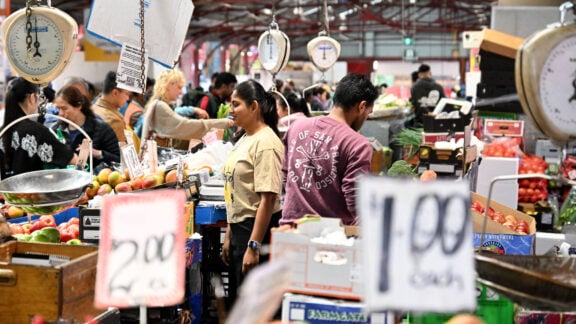An environmental sustainability plan implemented by the Sydney Opera House since 2010 came to fruition last month, with the iconic building scoring a four-star performance rating by the Green Building Council of Australia (GBCA).
Having worked in the construction and maintenance of the premises for more than four decades, Steve (Skevos) Tsoukalas has every reason to boast about his contribution to the achievement.
“The news about the award made me feel proud, because this building is the joy of my life. People from all over the world come to see it and not a day goes by with less than 20,000 visitors,” says Mr Tsoukalas.
The recognition came some years after it was given World Heritage site status by Unesco, making it one of the few such sites to be awarded green certification globally.
“Innovation is part of the Sydney Opera House’s DNA. From the building’s original seawater cooling plant and chilled ceiling design in the drama theatre to its durable materials and self-cleaning tiles, the Opera House is inherently sustainable in its design,” building director Greg McTaggart told Neos Kosmos.
“We want to ensure that the Opera House is recognised not only as one of the greatest buildings of the 20th century, but of centuries to come,” he said.
From energy efficiency and waste management to environmentally-friendly transport options, and the enhancement of accessibility and community engagement, a wide spectrum of initiatives contributed to the building’s four-star rating.
One factor that set the benchmark high was the eco-friendly method for cleaning its concrete with bicarbonate soda and bronze with olive oil.
Both these ideas came from Tsoukalas, who was hired originally to work on the the Opera House’s construction, but who became so intimately attached to the building that he decided to stay after its completion. He is now its unofficial custodian.
Kalymnos-born Tsoukalas came to Australia in 1964, the last of his five siblings to settle Down Under.
He joined the Opera House workforce during the third stage of the construction in 1968, in the same year that he married. Ever since, a special bond grew between him and the building.
“Eventually I fell in love with the Opera House; both ladies are stunningly beautiful, my wife and the building,” he says.
“During the 47 years I’ve been working here, the same feeling of strong affection has remained and this is what motivates my strenuous efforts to care for its surface.”
Situated on the water’s edge in Sydney Harbour, the Opera House is susceptible to pollution from sea salt and wind currents.
Tsoukalas describes how he came up with solutions of olive oil and bicarbonate soda to treat the thousands of tons of bronze and concrete which make up the building.
In order to gently scrape off the debris and grime from the concrete walls, he made an ointment with baking soda.
“Following experiments I found that this homemade ‘remedy’ is harmless for me when I apply it, and at the same time it works perfectly well for removing the dirt of the building’s surface with minimum environmental impact,” he explains.
As for the bronze, were it not for the use of olive oil, it would soon turn rusty and greenish because of atmospheric oxidation and long-term exposure to humidity.
Tsoukalas says his source of inspiration for this alternative method was the practice of ancient Greek wrestlers to cover their bodies in oil.
“I first applied some olive oil on a small part and the very next day the results were visible. The oil had penetrated the interior and made the dirt surface more easily. I gently rubbed it off and the bronze was clean again.”
“When I showed it to Jan Utzon, son of the building’s architect Jørn, he gave me the green light and told me to use this technique on the entire bronze surface.”
Tsoukalas sees the Opera House as a living organism and his connection to it as a reciprocal love affair.
“It’s not just that I love the building, but I also receive recognition and appreciation for my work and devotion by other employees and the management.
“I love the building as much as I love my wife,” he says.
While he might typically start work at 6.30 am he arrives on the site at 5.00 am every day, spending his early morning hours walking around the premises to track down any damage that needs to be reported.
He knows the building like the palm of his hand and this is something that doesn’t slip the tour guides’ attention.
“I feel proud when the tour guides introduce me to people visiting from all over the world. They see me as a part of the living history of the Opera.”
When it comes to the prospect of retirement, 70-year-old Tsoukalas gets emotional.
“I reject the idea of retirement. I know when the time comes for me to leave, my health will be deteriorated.”









